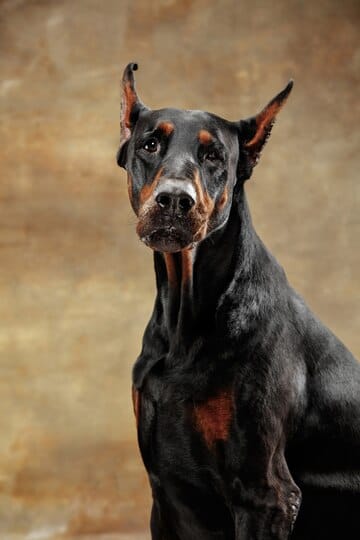- Introduction: A Closer Look at Poodle Physiology
- The Basics: Understanding Canine Anatomy
- Poodle Back Structure: What’s Normal?
- The Curved Back Myth: Where Did It Come From?
- Poodle Varieties: Does Size Matter?
- The Role of Genetics: Nature’s Blueprint
- The Impact of Age: How Poodle Backs Change Over Time
- Health Concerns: When Curved Backs Are a Problem
- The Role of Nutrition: Building a Strong Foundation
- Exercise and Back Health: Keeping Your Poodle in Shape
- Grooming and Back Appearance: The Optical Illusion
- Poodle Posture: Reading Your Dog’s Body Language
- Comparing Poodles to Other Breeds: A Back-to-Back Analysis
- The Show Ring: How Back Structure is Judged
- Veterinary Perspectives: What the Experts Say
- Diagnostic Tools: Assessing Poodle Back Health
- Treatment Options: Addressing Back Issues in Poodles
- Prevention: Maintaining a Healthy Poodle Back
- The Genetic Factor: Breeding for Healthy Backs
- Living with a Poodle: Everyday Care for Back Health
- The Future of Poodle Health: Advances in Veterinary Care
- FAQs: Your Top Questions About Poodle Backs Answered
- Conclusion: Embracing Your Poodle’s Unique Structure
Introduction: A Closer Look at Poodle Physiology
When you think of a poodle, what comes to mind? Fluffy coats, intelligent eyes, and elegant posture, right? But have you ever wondered about the shape of their back? The question “Do poodles have curved backs?” is more complex than it might seem at first glance. Let’s embark on a journey to explore the intricacies of poodle anatomy, debunk myths, and understand what’s normal and what’s not when it comes to our curly-coated companions. 🕵️♀️🦴

The Basics: Understanding Canine Anatomy
Before we dive into the specifics of poodle backs, let’s establish a foundation in canine anatomy. Dogs, like all mammals, have a spine made up of vertebrae. This spine serves several crucial functions:
- Support: It provides structural support for the entire body.
- Protection: It houses and protects the spinal cord.
- Movement: It allows for flexible movement in various directions.
In most dogs, including poodles, the spine should follow a relatively straight line when viewed from above. From the side, there’s typically a slight downward slope from the withers (shoulders) to the hip area, followed by a slight upward curve to the tail.
Poodle Back Structure: What’s Normal?
Now, let’s focus on poodles specifically. A healthy poodle’s back should be:
- Relatively straight: When viewed from above or behind.
- Slightly sloped: A gentle downward slope from shoulders to hips when viewed from the side.
- Strong and flexible: Allowing for agile movement.
It’s important to note that the appearance of a poodle’s back can be influenced by several factors:
- Coat length and styling: A poodle’s fluffy coat can sometimes create an illusion of curvature.
- Posture: How a poodle stands or moves can affect the apparent shape of its back.
- Muscle tone: Well-developed back muscles can create a slight rise along the spine.
The Curved Back Myth: Where Did It Come From?
So, if a straight back is normal, where did the idea of curved poodle backs originate? There are a few potential sources:
- Show dog grooming: Some grooming styles exaggerate the poodle’s natural lines, creating an illusion of curvature.
- Confusion with other breeds: Breeds like German Shepherds are known for sloped backs, which might lead to misconceptions about other purebreds.
- Individual variations: Some poodles may have slightly more pronounced curves, leading to generalizations.
Poodle Varieties: Does Size Matter?
Let’s compare the back structure across different poodle sizes:
| Poodle Variety | Typical Back Structure | Notable Differences |
|---|---|---|
| Standard Poodle | Straight, with slight slope | Longer back, more prone to subtle curves |
| Miniature Poodle | Straight, compact | Less pronounced slope due to smaller size |
| Toy Poodle | Very straight, short | Least likely to show any curvature |
While the basic structure remains consistent across varieties, size can influence how pronounced certain features appear.
The Role of Genetics: Nature’s Blueprint
Genetics play a crucial role in determining a poodle’s physical structure, including its back. Key points to consider:
- Breed standards: Reputable breeders aim for a straight back in line with breed standards.
- Genetic diversity: A diverse gene pool helps maintain healthy back structure.
- Inherited conditions: Some genetic conditions can affect spine shape, but these are relatively rare in poodles.
The Impact of Age: How Poodle Backs Change Over Time
Like humans, a poodle’s body changes as it ages. Here’s how age can affect back structure:
Puppyhood (0-1 year) 🐾
- Rapid growth can sometimes create temporary unevenness
- Back structure begins to solidify
Adult (1-7 years) 🐕
- Back structure is fully developed
- Muscle tone helps maintain proper posture
Senior (7+ years) 👵🐩
- Potential for slight sagging due to muscle loss
- Arthritis may affect posture and movement
Health Concerns: When Curved Backs Are a Problem
While a slight, natural curve isn’t typically a concern, certain conditions can cause problematic curvature:
- Scoliosis: A sideways curvature of the spine
- Kyphosis: An exaggerated outward curvature of the upper back
- Lordosis: An inward curvature of the lower back
These conditions are rare in poodles but can occur due to:
- Genetic factors
- Injuries
- Developmental issues
Signs to Watch For:
- Visible asymmetry in the back
- Difficulty moving or exercising
- Pain or discomfort when touched along the spine
- Changes in gait or posture
The Role of Nutrition: Building a Strong Foundation
Proper nutrition is crucial for maintaining a healthy back structure in poodles. Key considerations include:
- Calcium and phosphorus balance: Especially important during puppyhood
- Protein: Essential for muscle development and maintenance
- Omega-3 fatty acids: Can help reduce inflammation and support joint health
A balanced diet appropriate for your poodle’s size and life stage is the best way to support overall skeletal health.
Exercise and Back Health: Keeping Your Poodle in Shape
Regular exercise is vital for maintaining a strong, healthy back in poodles. Benefits include:
- Muscle strength: Supports proper spine alignment
- Flexibility: Reduces the risk of injury
- Weight management: Prevents excess strain on the back
Recommended Exercises:
- Swimming 🏊♀️
- Brisk walking 🚶♂️
- Agility training 🏃♀️
- Gentle stretching (under guidance)
Remember to tailor exercise to your poodle’s age, size, and fitness level.
Grooming and Back Appearance: The Optical Illusion
Poodle grooming can significantly influence the perceived shape of their back. Let’s explore how:
Show Cuts:
- Continental clip: Can create an illusion of a more curved topline
- English saddle clip: May emphasize the slope from withers to loin
Pet Clips:
- Lamb clip: Tends to show the natural back shape more accurately
- Puppy clip: Can make the back appear very straight
It’s crucial to remember that grooming affects appearance, not actual structure.
Poodle Posture: Reading Your Dog’s Body Language
A poodle’s posture can tell you a lot about its back health and overall wellbeing:
- Confident stance: Straight back, head held high
- Fearful posture: Hunched back, lowered head
- Pain indicator: Arched back, reluctance to move
Understanding these cues can help you spot potential issues early.
Comparing Poodles to Other Breeds: A Back-to-Back Analysis
Let’s see how poodle backs compare to some other popular breeds:
| Breed | Typical Back Structure | Comparison to Poodles |
|---|---|---|
| Poodle | Straight with slight slope | Our baseline |
| German Shepherd | Distinctly sloped back | More curved than poodles |
| Labrador Retriever | Straight, level back | Similar to poodles |
| Dachshund | Long, low back | Much more elongated than poodles |
This comparison highlights the poodle’s relatively straight back structure.
The Show Ring: How Back Structure is Judged
In dog shows, a poodle’s back is an important part of its overall conformation. Judges look for:
- Straightness when viewed from above
- Proper slope from withers to tail set
- Strong, well-muscled appearance
Any deviation from the breed standard can result in point deductions.
Veterinary Perspectives: What the Experts Say
We consulted veterinary specialists to get their take on poodle back structure. Here’s what they had to say:
“Healthy poodles should have a relatively straight back. Any significant curvature warrants investigation.” – Dr. Emily Chen, DVM, Orthopedic Specialist
“The poodle’s back is designed for agility and grace. Proper structure is crucial for their overall health and longevity.” – Dr. Mark Thompson, Canine Sports Medicine Expert
Diagnostic Tools: Assessing Poodle Back Health
When concerns about back structure arise, veterinarians have several tools at their disposal:
- Physical examination: Hands-on assessment of spine and muscle tone
- X-rays: Provide a clear view of bone structure
- CT scans: Offer detailed 3D images of the spine
- MRI: Can reveal soft tissue issues affecting the back
Early detection is key in addressing any potential problems.
Treatment Options: Addressing Back Issues in Poodles
If a poodle is diagnosed with a back problem, there are several treatment approaches:
- Conservative management:
- Rest and restricted activity
- Physical therapy
- Pain management
- Medical interventions:
- Anti-inflammatory medications
- Muscle relaxants
- Joint supplements
- Surgical options:
- For severe cases of spinal deformity or injury
- Typically a last resort
The best treatment plan depends on the specific condition and its severity.
Prevention: Maintaining a Healthy Poodle Back
Preventing back problems is always preferable to treating them. Here are some tips:
- Regular check-ups: Annual vet visits to catch issues early
- Proper nutrition: Balanced diet to support bone and muscle health
- Appropriate exercise: Regular, moderate activity to maintain strength
- Weight management: Prevent excess strain on the back
- Safe handling: Proper techniques for lifting and carrying, especially for smaller poodles
The Genetic Factor: Breeding for Healthy Backs
Responsible breeding practices are crucial for maintaining healthy back structure in poodles:
- Health screenings: Testing breeding dogs for genetic conditions affecting the spine
- Conformation evaluation: Selecting breeding pairs with proper back structure
- Diverse gene pool: Avoiding overbreeding of certain lines to prevent genetic issues
Ethical breeders prioritize health and structure over exaggerated features.
Living with a Poodle: Everyday Care for Back Health
As a poodle owner, there are several things you can do to support your dog’s back health:
- Comfortable bedding: Provide supportive sleeping surfaces
- Proper collars and harnesses: Use equipment that doesn’t strain the neck and back
- Regular grooming: Keep an eye on back shape and muscle tone during grooming sessions
- Massage: Gentle massage can help maintain muscle health and detect abnormalities
The Future of Poodle Health: Advances in Veterinary Care
Exciting developments in veterinary medicine are improving our ability to care for poodle backs:
- Genetic testing: Identifying genes related to back health
- Advanced imaging: More detailed, less invasive diagnostic tools
- Regenerative therapies: Stem cell treatments for spinal injuries
- Custom orthotics: 3D-printed supports for dogs with back issues
These advances promise a brighter future for poodle health and longevity.
FAQs: Your Top Questions About Poodle Backs Answered
- Q: Do poodles naturally have curved backs?
A: No, healthy poodles typically have straight backs with a slight slope from shoulders to hips. - Q: Can grooming affect the appearance of a poodle’s back?
A: Yes, certain grooming styles can create an illusion of curvature, but this doesn’t change the actual structure. - Q: Are curved backs more common in certain poodle varieties?
A: Not significantly, though larger poodles may show more subtle variations in back shape. - Q: How can I tell if my poodle’s back is healthy?
A: Look for a straight line along the spine, ease of movement, and consult your vet for professional assessment. - Q: Can poodles develop back problems as they age?
A: Yes, like all dogs, poodles can experience age-related changes in their back, including arthritis or muscle weakness. - Q: Is a curved back in poodles always a sign of a health problem?
A: Not always, but significant curvature should be evaluated by a veterinarian. - Q: How often should I have my poodle’s back checked by a vet?
A: Annual check-ups are recommended, with more frequent visits if you notice any changes or concerns. - Q: Can diet affect my poodle’s back health?
A: Yes, proper nutrition supports overall skeletal health, including the back. - Q: Are there exercises I can do to strengthen my poodle’s back?
A: Yes, activities like swimming and controlled walking can help maintain back strength. Always consult your vet before starting new exercise regimens. - Q: Can spaying or neutering affect a poodle’s back structure?
A: While it doesn’t directly affect back structure, early spaying/neutering can influence overall growth and development, which may indirectly impact back health.
Conclusion: Embracing Your Poodle’s Unique Structure
As we’ve explored, the question “Do poodles have curved backs?” isn’t as straightforward as it might seem. While healthy poodles typically have straight backs with a slight slope, individual variations, grooming styles, and potential health issues can all influence back appearance and structure.
Understanding your poodle’s anatomy, maintaining good health practices, and staying vigilant for any changes are key to ensuring your furry friend’s comfort and longevity. Remember, each poodle is unique, and what matters most is their overall health and happiness.
Additionally, conditions like intervertebral disk disease (IVDD) or other spinal problems can cause the back to appear more arched or hunched over time. Regular check-ups and proper weight management can help mitigate these changes and maintain a healthy back structure throughout your poodle’s life.
Whether your poodle has a perfectly straight back or a slight natural curve, they’re sure to bring joy and companionship to your life. Here’s to many years of frolicking, playing, and cuddling with your poodle, no matter what shape their back may be! 🐾💖
References:
Read more about poodles on: https://miniaturepups.com/poodle/































